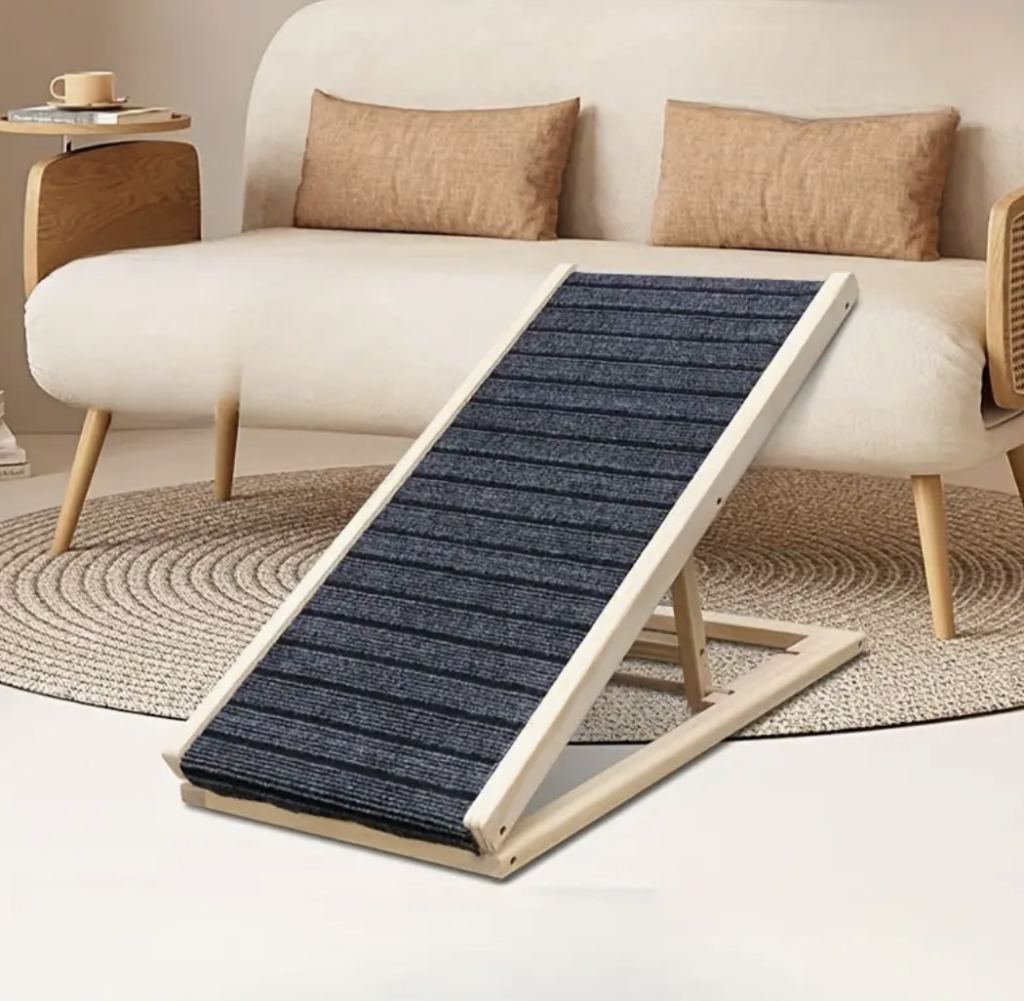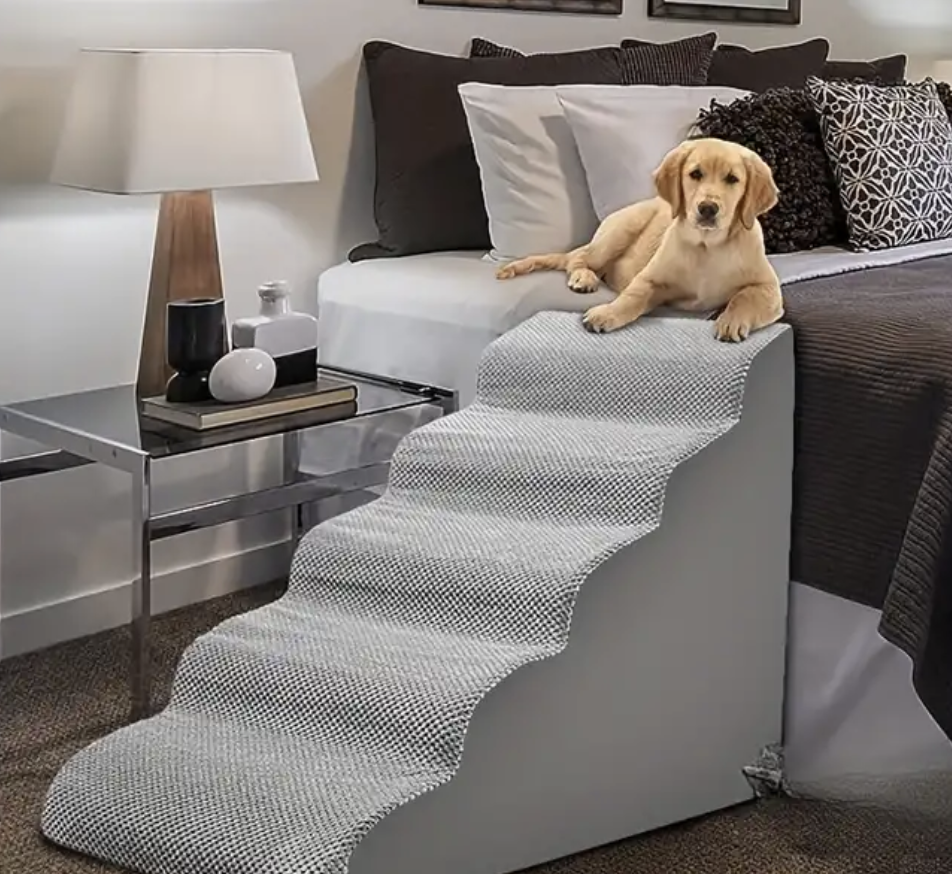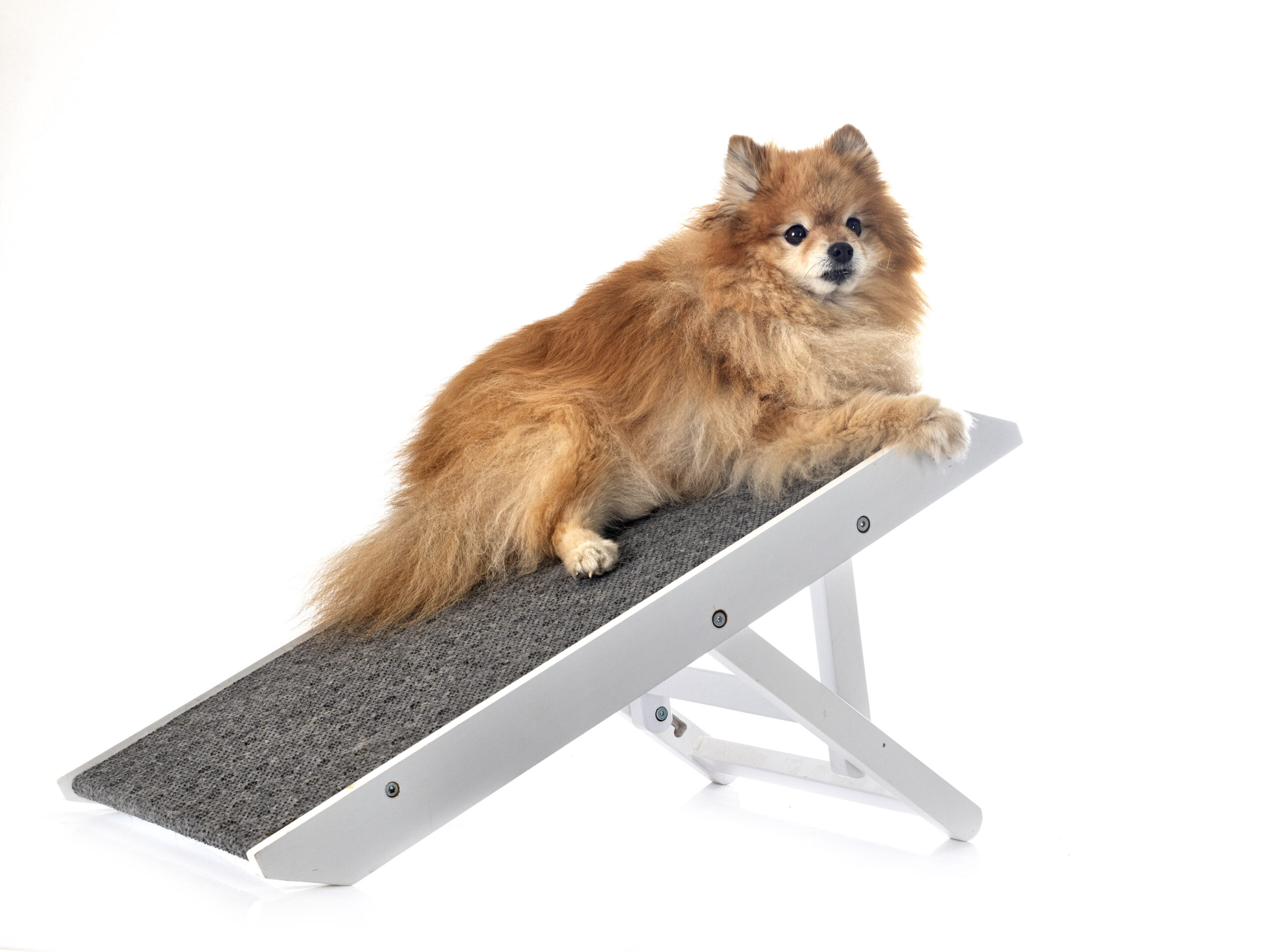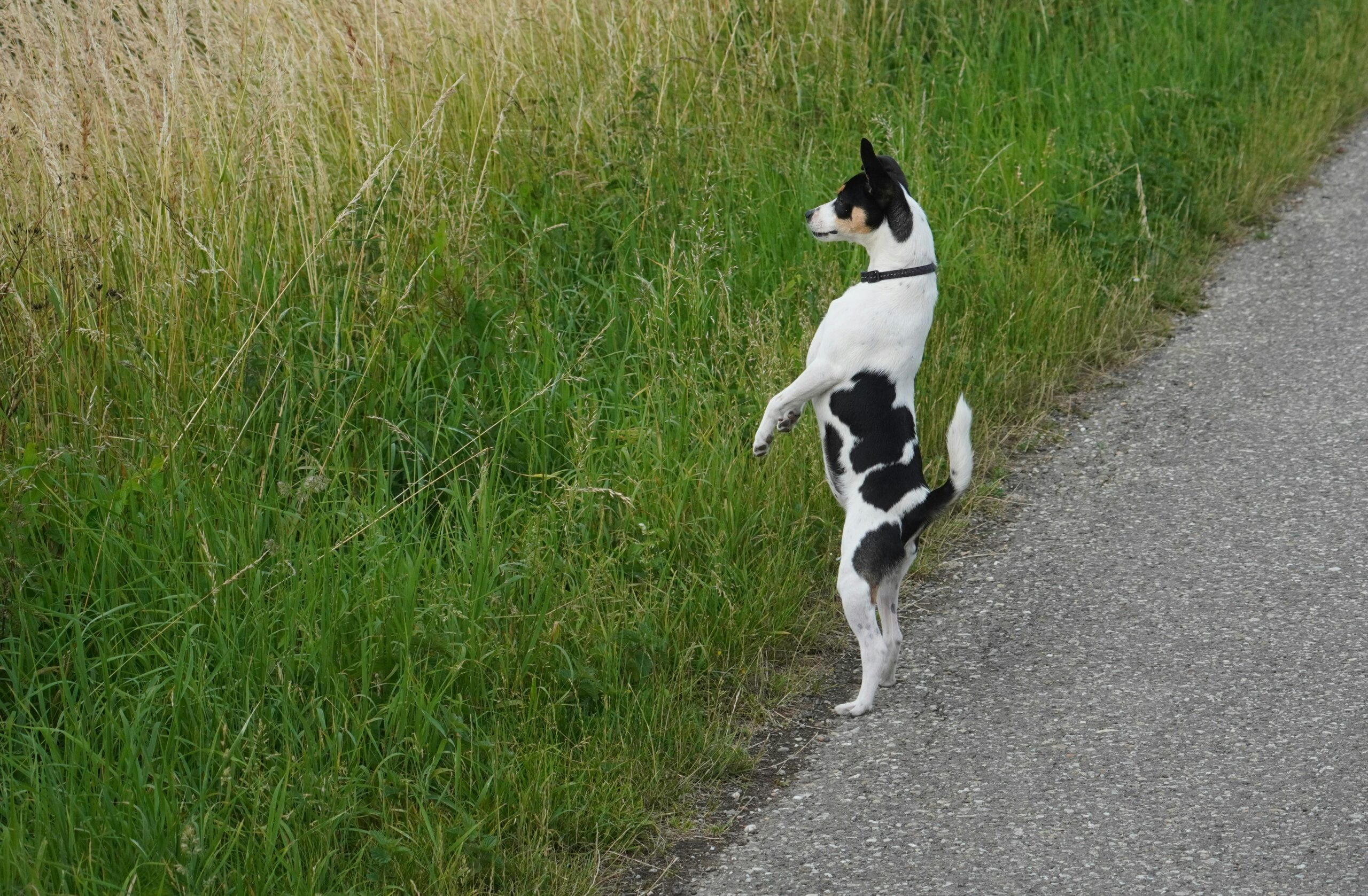Is your senior dog struggling to climb onto the couch now that his back legs are weaker than before? Or maybe you’re looking to assist a shorter legged pup (Corgis!) who has trouble jumping off a higher surface? Even for healthy young dogs, jumping up and down all the time can eventually take a toll on the joints. Don’t worry, we’ve got you covered! In this guide, we’ll walk you through everything you need to know about buying a couch ramp for dogs.
One of the first signs I noticed of my dog ageing (and eventual arthritis) was his increasing tendency to stay off the bed, which was previously his go-to snoozing spot. As our dogs age, they may experience joint pain or mobility issues, making it difficult for them to access places like couch or bed. A couch ramp can be a game-changer, providing them with a safe and comfortable way to reach their cozy spot without putting stress on their joints.

Factors to Consider When Buying a Couch Ramp for Your Senior Dog
Choosing the right couch ramp for your senior dog is essential to ensure their safety and comfort. There are several factors you should consider before making a purchase.
Incline of the Ramp
The incline of the ramp is crucial for your dog’s ease of use. Dogs with mobility issues may struggle with steep inclines, so it’s important to find a ramp with a gentle slope. Tip: Look for ramps with adjustable inclines, allowing you to customize it to your dog’s needs.
Slipperiness
Slippery surfaces can be dangerous for senior dogs, especially if they have weak joints. Look for ramps with a non-slip surface to provide your dog with better traction. Some ramps come with carpeted or textured surfaces, which can prevent your dog from slipping and provide added comfort.
While it’s important to consider the slipperiness of the ramp’s surface, don’t forget to check the bottom as well. A ramp that slides away when your dog walks off it can be hazardous, and this can happen on carpet too. Ramps with non-slip rubber grips on the bottom will ensure stability.
Material
Sturdy material such as aluminum or high quality plastic will provide the best support. Avoid ramps made of materials that are too soft like plush. We want a hard ramp that won’t cave in with your dog’s weight.
Ramp Width
Consider the width of the ramp to ensure your dog can comfortably walk up and down it without fear of falling off the side. If your dog is larger, a wider ramp will be more suitable. Measure your dog’s width and compare it to the ramp’s dimensions to ensure a proper fit.
Ease of Cleaning
Accidents happen (especially with senior dogs!), so it’s important to choose a ramp that is easy to clean. Look for ramps with removable and washable covers or surfaces that can be easily wiped clean. This will help maintain hygiene and keep the ramp in good condition.
Choosing the Right Size and Weight Capacity for Your Senior Dog
When selecting a couch ramp for your senior dog, it’s important to consider their size and weight capacity. Choosing the right size will ensure that your dog can comfortably and safely use the ramp.
Measure your dog’s height from the ground to the top of the couch or bed to determine the ideal ramp length. Ensure that the ramp is long enough to provide a gentle incline without causing strain on your dog’s joints.
Additionally, check the weight capacity of the ramp to ensure it can support your dog’s weight. Most ramps specify a weight limit, so choose one that can accommodate your dog’s size. It’s always better to choose a ramp with a higher weight capacity to provide an extra margin of safety.

Our Dog Ramp Picks
Our choice for small dogs:: This ramp is our recommendation for small dogs. It’s nice and grippy, adjustable to four different heights, and is foldable for easy storage.
Our runner up choice for small dogs:: This soft ramp is made up of 3 gentle steps. Being made of a firmer foam, it’s light and easy to move around the house, and has a removable cover for easy machine washing.
Our choice for medium sized or handicapped dogs:: This adjustable ramp has side rails that your handicapped dog can lean against, with extra grippy crossbars on the surface, and is extra-wide for stumblers.
Our choice for large sized dogs:: This aluminum ramp is actually a retractable staircase that can be adjusted for height. Although ramps are more gentle on the joints, this could be a good option for dogs who are still pretty mobile but don’t want to do big jumps up and down. We love that it’s light weight and wide enough for larger dogs.
Our choice for the design-conscious:: This light grey ramp will look great in any room, however the slope is fixed at a gentle 20 degrees. You can choose the large size for a bed height, or medium for something lower like a couch. There is a gap from the floor, but this shouldn’t be a problem for most.
How to Train Your Senior Dog to Use a Couch Ramp
Now that you’ve purchased the perfect couch ramp for your senior dog, it’s time to train them to use it. If your dog doesn’t take to the ramp right away, training your dog to use a ramp may take some patience and positive reinforcement, but trust me, with time and consistency, they’ll soon get the hang of it. Here are some steps to follow when training your senior dog to use a couch ramp:
- Introduce the ramp gradually: Start by placing the ramp on the floor near the couch and allow your dog to sniff and explore it. Encourage them to walk on the ramp by using treats or their favorite toy as a motivator.
- Use positive reinforcement: Whenever your dog takes a step or walks on the ramp, praise and reward them with treats or verbal praise. This will help to associate the ramp with positive experiences and reinforce the behavior.
- Gradually increase the height: Once your dog is comfortable walking on the ramp at ground level, gradually increase the height by placing the ramp on a low step or stool. Again, use treats and positive reinforcement to encourage your dog to climb up and down the ramp.
- Practice regularly: Consistency is key when training your dog to use a couch ramp. Set aside regular training sessions each day and gradually increase the distance or height your dog needs to climb. With time and practice, your dog will become more confident and comfortable using the ramp.
- Be patient: Remember, training takes time and each dog learns at their own pace. Stay patient and avoid forcing your dog to use the ramp if they show signs of fear or resistance. Go at their pace and provide plenty of encouragement and rewards along the way.
Disclaimer: The above post contains affiliate links to products that have been deemed helpful by myself or others in the dog parenting community. As an Amazon Associate I earn from qualifying purchases resulting from these links, to help me support this blog.
The Ultimate Guide to Buying a Couch Ramp for Dogs
Is your senior dog struggling to climb onto the couch now that his back legs are weaker than before?…
Exercises for Elderly Dogs with Weak Back Legs
These exercises will help get your dog moving better by introducing the basics of joint movement, ba…
How to Trim Black Dog Nails on Senior Pups
It’s not easy to find the quick of your dog’s nails, especially when they’re black…
Home Remedies for Dogs with Arthritis that You Need to Know
You may have already spoken to your vet about the medications to alleviate pain and slow down the pr…
Help! My Old Dog’s Back Legs are Collapsing
As dogs age, it's not uncommon for them to experience mobility issues, especially in their hind end.…




